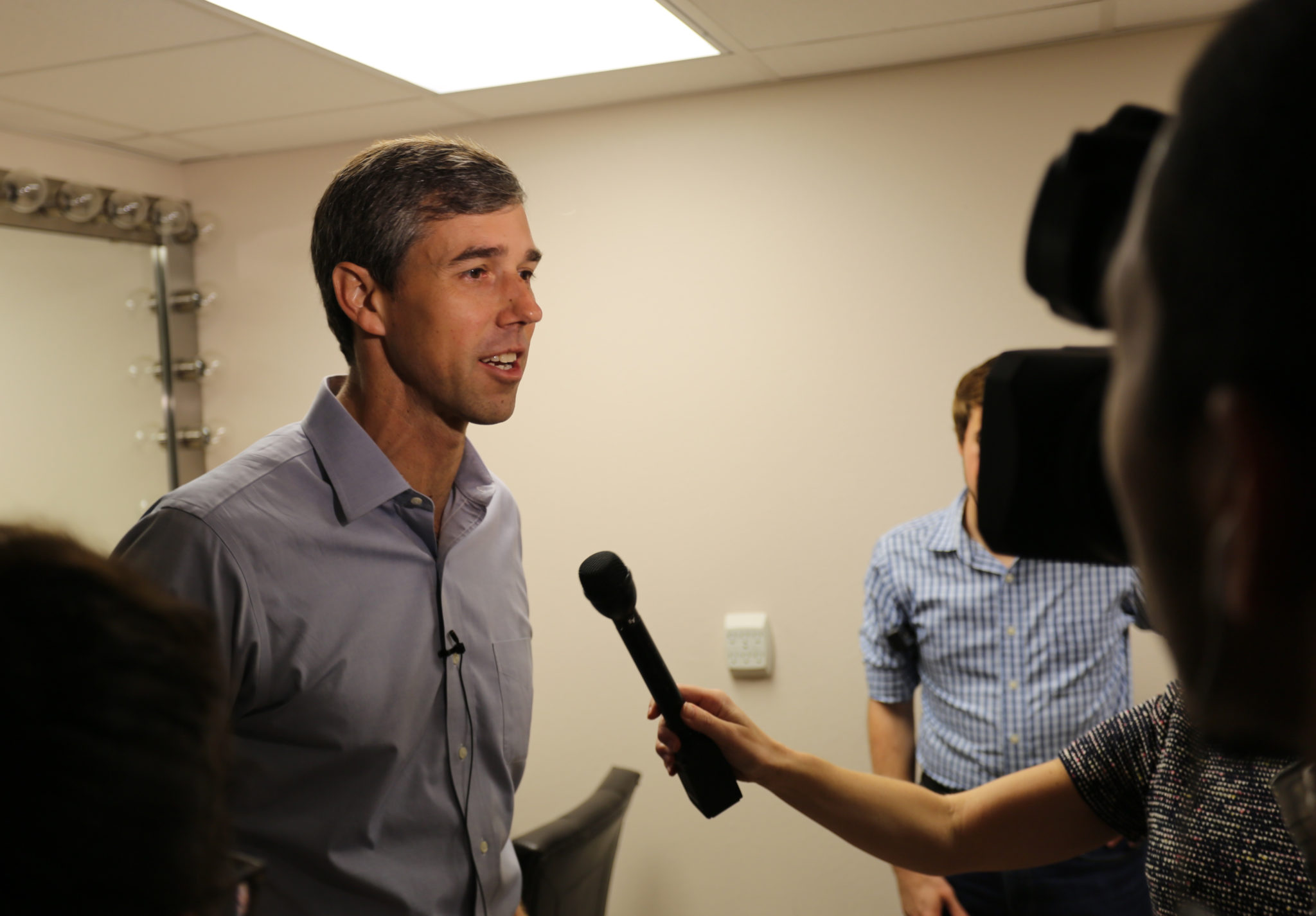In late November 2018, just weeks after U.S. Senator Ted Cruz eked out a win against Democratic phenom Beto O’Rourke, Texas’ senior U.S. Senator John Cornyn went on the radio with a warning: “Texas is no longer, I believe, a reliably red state.” O’Rourke, a former El Paso congressman, had lost by just 215,000 votes, the closest a Texas Democrat has come to winning a statewide election in a generation.
While some in the Republican Party were eager to dismiss O’Rourke’s near-win as a fluke, Democratic inroads up and down the ballot were undeniable. Amid historic voter turnout, Democrats flipped a dozen legislative seats and two congressional districts in suburban turf that was, in the recent past, seen as intractably red.
“We are on the precipice of turning purple, and we’ve got a lot of work to do to keep it red, because we lost, we got blown out in the urban areas,” Cornyn lamented in strikingly candid terms. “We got beat in the suburbs, which used to be our traditional strongholds. And if it wasn’t for the rural areas of the state, where Senator Cruz won handily, it might not have turned out the way it did.”
Two years later, Cornyn, who is facing his biggest reelection challenge since first winning his seat in 2002, has not altered his assessment of his home state. “I’ll be blunt—because I know I’m among friends here,” Cornyn said in a speech during the virtual GOP state convention in July. “Republicans are facing the greatest electoral challenge we’ve faced in the last five decades.”

As the senator made clear, the long-dominant Texas GOP has been forced into a defensive posture. A lot has changed since Cornyn first sounded the alarm in 2018, and little has favored Republicans. The electorate continues to transform: More than 600,000 new voters have registered since 2018, according to the Texas Secretary of State, and Democrats expect many of them will vote blue. Meanwhile, the divisive specter of Donald Trump looms ever larger as November approaches. In the past six months, the president botched the federal response to the deadly COVID-19 pandemic and initiated an authoritarian crackdown on racial justice protests in the wake of George Floyd’s killing by police officers. He has become even more alienating to the average voter and, if possible, even more alluring to conservatives. The prospect of Trump’s coattails dragging—instead of lifting—GOP prospects down the ballot are very real.
Heading into the 2020 elections, it’s not just Cornyn’s Senate seat and the state’s 38 electoral votes that are in play. Control of the Texas House and several congressional seats could flip as an ascendant and energetic Democratic Party seeks to take its pound of flesh from the entrenched-yet-embattled Republicans.
While Trump’s support among the Republican base is as strong as ever, his reelection prospects against his Democratic opponent Joe Biden look shaky—the former vice president consistently leads polls nationwide and in key swing states such as Pennsylvania, Michigan, and Florida. Even in Texas, Trump is on less-than-solid ground. A Dallas Morning News/University of Texas at Tyler poll released this month showed Trump narrowly leading Biden 48-46 among likely voters here. Two more polls came out this week showing Biden dead even at 46-46 and trailing by one point.
The Dallas Morning News poll also showed Cornyn leading his opponent, decorated combat veteran and former congressional candidate MJ Hegar, 39-28 among likely voters. However, an astounding 28 percent are still undecided, leaving Hegar with lots of room to gain ground.
The Trump campaign and its allies have waved away concerns about losing Texas. Lieutenant Governor Dan Patrick told reporters last month that he thinks the president will improve on his relatively weak showing in 2016, when he beat Hillary Clinton in Texas by just 9 percentage points. “I think it’s very possible he can go over into double digits this time,” Patrick said.
Texas, a sprawling state with several expensive media markets, is not one of Biden’s top electoral targets and, despite pressure from some party activists to go all in, his campaign has not yet invested substantial money here. But Democrats on the ground are used to fending for themselves.
“Does the DNC and the national Democratic Party get how important Texas is? The short answer is no,” said Beto O’Rourke ahead of the Democratic National Committee convention in August. “They’re not going to ride to our rescue, there’s no cavalry coming to help us. At the end of the day, Texans have to win Texas, but that’s the way it’s always been.”

Since 2018, the state party has made a concerted effort to build its base. Democrats have long said that registering and mobilizing new voters, particularly among young people and people of color, is the key to winning statewide: “Texas isn’t a red state; it’s a non-voting state,” the refrain goes. The party’s internal data models estimate at least 2.6 million would-be Democratic voters in the state are unregistered. After a recent voter registration campaign, the Texas Democratic Party and Hegar’s Senate campaign said that volunteers called or texted 1.3 million unregistered voters, urging them to register before the October 5 deadline.
Since returning to Texas after his failed presidential bid last November, O’Rourke has proven to be a relevant political force. He launched a group called Powered by People, which aimed to revive the massive volunteer base that drove his 2018 campaign and to focus on flipping legislative and congressional seats through door-knocking, voter registration, and phone and text banking. In July, O’Rourke announced that the group’s volunteers were hoping to make at least 15 million phone calls to Texas voters ahead of the election, which would come close to the astounding 20 million calls made during his Senate campaign.
Powered by People also teamed up with the state party and the Texas Coalition of Black Democrats in an endeavor to contact every one of the 1.5 million Texas’ Black voters, who have long formed the backbone of the state party.
While there is predictably intense focus in the presidential election and Texas’ statewide electoral prospects, Democrats’ top 2020 objectives are further down ballot. Just nine seats away from control of the lower chamber, the Texas House is the crown electoral jewel for state Dems. Winning the House would give Democrats power in state government for the first time since they lost it in 2002, providing a platform to promote their own agenda and act as a critical check against the GOP’s radical right-wing agenda. But, perhaps most importantly, it would also give Democrats needed leverage in the upcoming redistricting process—providing the party a chance to prevent Republicans from gerrymandering themselves into power for yet another decade.
In 2018, O’Rourke won in just over half of the Texas House districts, paving a plausible path to power for House Democrats. But the party has cast a wide net and is seriously contesting 22 GOP-held seats. The national Democratic super PAC Forward Majority, which is focused on states where legislative control can influence redistricting, just announced plans to spend more than $6 million aiding Democrats’ efforts. The super PAC is focusing on 18 Texas House seats where Republicans look most vulnerable. Top targets include Republican incumbent Sarah Davis in HD-135, an affluent pocket of suburban Houston that O’Rourke won by more than 20 percentage points, and right-winger Tony Tinderholt in HD-94, a Tarrant County district that O’Rourke lost by a mere 3 points.
The Democratic Congressional Campaign Committee, the campaign arm for national House Democrats, has also made Texas its biggest battleground state as it seeks to expand its majority in the House of Representatives. Since 2018, scores of Republican incumbents have retired, leaving at least three competitive seats up for grabs. One of those is the 24th Congressional District in the northern suburbs of the Metroplex, where Democrat Candace Valenzuela is facing Republican Beth Van Duyne, the former mayor of Irving who infamously fear-mongered about Sharia law taking hold in Texas. In Austin, Chip Roy, the Ted Cruz-acolyte who represents the 21st Congressional District that stretches from Austin toward San Antonio and into the Hill Country, is up against the former Democratic state senator and gubernatorial candidate Wendy Davis. In total, the DCCC has its eyes on 10 GOP seats in Texas and has pumped unprecedented resources and money into the state.
These congressional and legislative targets are concentrated in the rapidly transforming suburbs of Houston, Dallas, and Fort Worth, as well as in the heavily gerrymandered GOP-held seats that splinter the liberal Austin electorate. Democratic candidates—the vast majority women—are running on similar messages that contrast their bread-and-butter issues like health care access, public education, gun reform, and COVID-19 against an unspoken backdrop of Trump-induced chaos.
Meanwhile, Republicans are struggling to avoid being defined by Trump. Some have downplayed Democrats’ midterm performance, saying O’Rourke had hit his head on the blue ceiling in a state that is still firmly red. But state party leaders were quick to recognize the real threat posed by Democrats’ advances in 2018—especially in their once-unscalable suburban fortresses—and raced to shore up their defenses and bolster their ground game. Mega-donors pumped millions into a new super PAC that hired hundreds of staffers to register new Republican voters this year, an initiative that was eventually thwarted by the COVID-19 shutdowns. The party even called on Karl Rove, the architect of Republicans’ takeover of Texas a generation ago, for assistance.
But those efforts haven’t changed political reality. The specter of Trumpism has energized the Democratic base in Texas and risks driving independents and and even some Republicans away from the party. Behind the scenes, Republicans are clear-eyed about the political risks that Trump brings. In a secretly recorded conversation with Michael Quinn Sullivan, the head of right-wing group Empower Texans, early last summer, Speaker of the Texas House Dennis Bonnen bemoaned that Trump is “killing us in urban-suburban districts.” He cited a poll that showed GOP state Representative Angie Chen-Button, one of the most vulnerable incumbents, losing her Dallas district by 15 points.
The Texas GOP has become thoroughly MAGA-fied and Trump is, by far, the most popular Republican with the party base. That makes it difficult, if not impossible, for vulnerable candidates to create any meaningful distance from Trump—assuming they were inclined to do so.
Take, for instance, Cornyn, a consummate party loyalist. In the face of a contentious reelection campaign, Cornyn doesn’t seem to have moderated all that much. In fact, he’s been one of the president’s most vocal supporters during the pandemic. As one GOP political operative told Rolling Stone about Cornyn: “You have 25 percent of the state is rural and Trump gets like Saddam Hussein-level numbers here. 87 percent in 25 percent of the state… Cornyn gets 69. And so Cornyn can’t find a place to break from because he could really put that in jeopardy.”
The challenges of voting created by COVID-19 have also cast a shadow over the election cycle. While Trump has incessantly spun conspiracies about vote-by-mail fraud, Governor Greg Abbott, Lieutenant Governor Dan Patrick, and Attorney General Ken Paxton have obligingly contested Democrats’ attempts to expand access to mail-in ballots at every juncture. True to form, the Texas GOP continues to send out mail ballot applications to the elderly and voters with disabilities as part of its get-out-the-vote effort.
Republicans’ attempts to block counties like Harris County—the now solidly blue home to the biggest share of the state’s electorate—from sending out vote-by-mail ballot applications to registered voters has sparked concern over voter suppression amid a pandemic that has disproportionately affected Black and Hispanic Texans.
Meanwhile, one month before early voting begins, Cornyn is taking heed of his own warning that Texas is “no longer a reliably red state.” During Congress’s August recess, he trotted around Texas holding events and began running TV ads about how he purportedly secured federal funding for local schools to safely re-open during the pandemic. As a Republican who rose to power when Texas first turned red nearly 30 years ago, he’s now trying—more than ever before—to hold onto that power as the state shifts once again.
Correction: Chip Roy represents the 21st Congressional District. The Observer originally stated that Roy represents the 10th Congressional District. We regret the error.
Read more from the Observer:
-
Pepe the Frog Mutates from a Far Right Meme Into a Lovable, Far Gone Figure in ‘Feels Good Man’: Filmmaker Giorgio Angelini, who hails from Houston, and debut director Arthur Jones teamed up for a new documentary on the internet that clarifies the current moment.
-
Beyoncé Isn’t Possible Without Houston. Houston Isn’t Possible Without the Black Diaspora: Texas’ artistic innovation is nothing new and continues to be center stage through artists like Beyoncé during yet another period of Black rediscovery.
-
Why Does John Cornyn Tweet?: An analysis.







